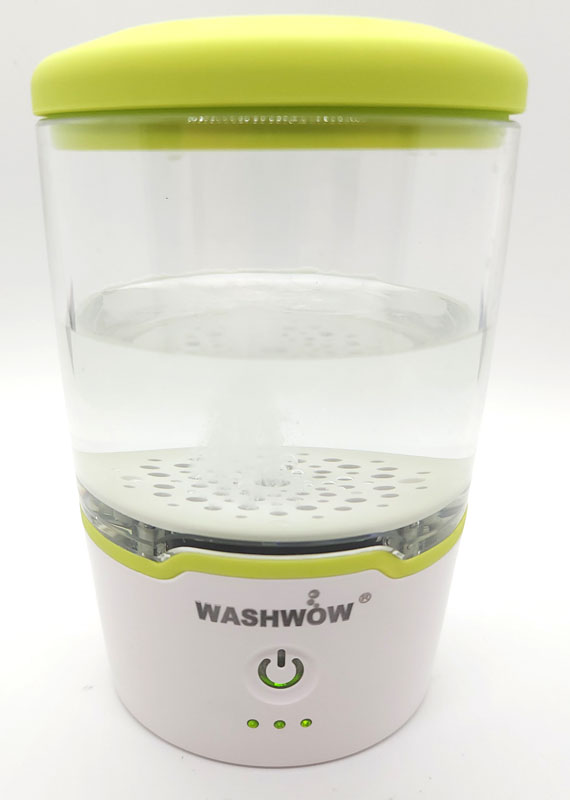
CROWDFUNDING REVIEW – It’s time to get all science-y folks as today, we’re going to explore the mysteries of electrolyzed water. Per Wikipedia: Electrolysed water (electrolyzed water, EOW, ECA, electrolyzed oxidizing water, electro-activated water, or electro-chemically activated water solution) is produced by the electrolysis of ordinary tap water containing dissolved sodium chloride. The electrolysis of such salt solutions produces a solution of hypochlorous acid and sodium hydroxide. The resulting water can be used as a disinfectant.
So what, you say? Who cares, you ponder? You should because today, we’re looking at a home solution to produce electrolyzed water to clean out that bacteria trap of a mouth that we all have. Kickstarter darling Washwow, the starter of multiple successful Kickstarter campaigns, is back at it again with the Washwow Cup2 – the second generation of their electrolyzed water-producing cup. This cup is designed to produce an effective disinfectant that you can use to rinse your mouth after brushing your teeth rather than relying on harsh commercial mouthwash. Let’s see if this will become your favorite new “rinse and spit” tool.
What is it?
Washwow Cup2 is a tool that utilizes an electrolytic cell to generate electrolyzed tap water. Electrolyzed water generates hydroxide ions, hypochlorous acid (HClO or HOCl – both are correct), hydrocarbon groups, and so on, which help reduce odor-causing bacteria and eliminate bacteria-causing plaque in your mouth. HClO has been proven to destroy bacteria and it is a safe and effective cleanser and sanitizer. HClO is much more gentle than alcohol-based mouthwashes making it a perfect solution to kill bacteria and prevent plaque for folks with sensitive mouths. Cup2 uses electrolysis to break down sodium chloride (NaCl or salt) in the water and produce HClO.
What’s in the box?
- Washwow Cup2 with lid
- USB-A to USB-C charging cord (not included with this sample)
- Manual (not included with this sample)
Hardware specs
- Dimensions: 5.2″ h; 3.5″ w (at lid); 2.9″ w (at base)
- Weight: 9.4oz
- Cup material: food-grade plastic
- Cup capacity: 300ml / 10 ounces
- Available colors: blue, yellow, green (tested)
- Charging: 5V/2A USB-C
- Charging time: <4 hours
- Charging frequency: after more than 80 electrolyzing cycles
- Product lifespan: >2000 hours (3-5 years)
Design and features
This is a cup. Well, to be fair, a cup with a power block on the bottom. The power button and battery indicator are on the front of the base. The USB-C charging port is on the back. The soft cover doubles as a non-slip base.
The magic happens inside the 10-ounce cup.
Under the perforated bottom is where all the goodies reside. Electrodes break down suspended salt, or sodium chloride (NaCl), in regular tap water, generating hypochlorous acid.
As it does so, very fine bubbles rise through the holes.
Status LEDs reside under the platform. They glow blue when the cup is operating or reaches full charge, and red when charging.
Setup
The only setup is to charge the cup. Then, fill it with up to 10 ounces of water and press the button to generate electrolyzed water.
Performance
The first thing I noticed is that the capacitive power button is way too sensitive. Just brushing past it turns the cup on. It should require a one or two-second touch to prevent accidental activation. At least it beeps so you know you’ve turned it on.
I generated some electrolyzed water and used it as a mouthwash. The process takes 30 seconds. Micro-bubbles rise from the bottom of the cup throughout the entire 30 seconds. After it finished, I took a big swig and swished it around in my mouth. What was it like? Well…water. There was no taste, smell, carbonation, or any other noticeable difference from plain old tap water. But, there is supposed to be some magic in there that is potentially even more effective than alcohol-based mouthwash. More on that is coming…
Here’s what the 30-second cycle looks like. Watch for the teeny, tiny bubbles!
Those bubbles are supposed to be the result of the cup breaking down sodium chloride suspended in the water. But are they, or, did the Washwow folks just put in a bubble-maker? The bubbles come from a reaction between the electrodes and suspended sodium chloride in the water. What would happen if there was no sodium chloride in the water? Would it still do the same thing? If so, then this isn’t a legit product. To test that, I picked up a gallon of distilled water. OK, to be fair, my wife was out and I texted her to pick one up while she was out, so credit where credit is due. Distilled water has had all organic materials removed from it. Theoretically, the cup should do nothing if I fill it with distilled water. Let’s try it!
As you can see in the test, running a generation cycle with distilled water didn’t do anything. I dumped that out and replaced it with tap water. When I ran another cycle, bubbles were once again coming up through the grate. So, the cup is doing something, and it needs impure water to do that. My wife then asked, “What would happen if you add salt to distilled water?” Wow – good question. I put in more distilled water and verified no bubbles were generated. Then, I poured the water into a measuring cup, added a bit of salt, and stirred it up until it was dissolved. I pushed the button and bubbles galore were coming up from the bottom. So far, so good. The cup’s process is definitely reacting with salt in the water.
So, the cup appears to be doing something, and based on their claims, that is producing hypochlorous acid – a strong disinfectant. Next up, I decided to disinfect stuff. I started with my wife’s overnight mouthguard.
The nature of cramming something in your mouth overnight is that gunk builds up on it, even with regular cleanings. My wife soaks it in mouthwash and brushes it regularly, but over time, crud essentially permanently attaches to the guard. I dropped it into the cup and added some tap water.
I hit the power button and the cup started its process. You can see the micro-bubbles coming up from the bottom.
I left the guard in the water for a couple of hours. After that, I went over it with her Oclean Flow Sonic electric toothbrush. When I was done, the guard still looked a little crusty to me, at least it did until I looked at the before and after photos. What surprised me was that there was a bunch of debris in my sink that I didn’t initially notice. It appears that the Washwow Cup2 may have loosened some long-adhered gunk. I decided to wait a few days and run it through the cleaning process again. Here are the before and after shots from three cleanings.
I want to emphasize that she cleans this regularly. She soaks it in mouthwash and brushes it with her sonic toothbrush. Yet, after only three cleanings in the electrolyzed water, there is a major difference in the appearance of the mouthguard. Hmm…
Next, I plopped in our toothbrushes.
I was surprised when I rinsed mine and a bunch of gook rinsed out from the inside of the brush head on my toothbrush. What’s happening here? Is the cup really doing something? I rinse my brush after every brushing, so that took me by surprise.
Now, let’s talk about using electrolyzed water as a mouthwash. Years ago, my dentist counseled me to start using mouthwash at every brushing. It turns out that I have a knack for cranking out plaque like I was spackling a wall. Once I started doing that, my cleanings went much more smoothly. That’s why I was intrigued by the Washwow Cup2. We travel a lot and having to pack heavy bottles of mouthwash is a pain and a leak risk. If I forget to use mouthwash before bed, my mouth typically feels icky in the morning. Since I’ve been rinsing with electrolyzed water rather than mouthwash, my mouth has felt good in the morning. I was a bit surprised by this. When I rinse with alcohol-based mouthwash, I feel a little sting. It just feels like it is doing something. I get none of that with electrolyzed water. But, my lack of morning mouth serves as evidence says that something good must be happening.
So, we have better cleaning of a mouthguard. We have a fresh-feeling mouth in the morning. We have the expected “nothing happened” results by trying to zap distilled water. All of the observed evidence suggests that Cup2 is doing exactly what Washwow says it should be doing. But…it is time to enlist more science to prove it!
I went online and found a source for test strips that can detect HClO. It is time to prove this once and for all.
To test, I filled the cup and ran a cycle. Then, I tested with a test strip. I refilled the cup about half-full, ran another cycle, and tested again. I then tried it with the cup about a quarter full. After that, I ran a second cycle on the small amount of water, and then a third cycle. Here are the results.
There’s no point in telling you which strip is which as none of the tests indicated the presence of any chlorine. This was a completely unexpected result given the cleaning observations. That seemed weird given the results I have observed. But, perhaps even in a very weak concentration, HClO was doing some good.
Next, I filled the cup and added a very small amount of salt. It was totally unscientific – I just took a salt shaker and gave it a slightly tipped shake over the cup. I ran the generation cycle. The number of bubbles produced was significantly higher than before. I immediately tested the water.
Wow – what a difference! So, the cup does indeed create hypochlorous acid but while it appears that there must be suspended salt in my tap water, there simply isn’t enough to generate hypochlorous acid in any significant concentration.
The bottom line is that the Washwow Cup2 does what it said – uses electrolysis to act on suspended NaCl (salt) and create hypochlorous acid. The cup’s effectiveness directly depends on the quality of your tap water. It turns out that while there is definitely salt in my tap water, there simply isn’t enough to make an effective disinfectant. Adding just a touch of salt – and I’m talking 20-30 grains of salt here – to the water changes everything. The cup creates a high-powered yet mild disinfectant that still doesn’t have any discernable taste or smell.
Unfortunately, without purchasing chlorine test strips, a user will have no idea whether the cup is producing useful hypochlorous acid or an extremely weak solution. This is something Washwow should consider including with the purchase.
What I like
- Easy to use
- The treated water tastes like…well…water – no icky taste and no burning like alcohol-based mouthwash
- Great to travel with – I no longer need to pack heavy bottles of mouthwash, but will need to bring salt to ensure the cup will create HClO
What I’d change
- The capacitive power switch is too sensitive and needs a delay
- They should include a small number of chlorine test strips so a purchaser will know whether their tap water is appropriate to use or if they need to augment it with a dash of salt
Final thoughts
Keep in mind that this is not yet a product, it is a campaign on Kickstarter. That comes with inherent risks. Having said that, Washwow has already conducted several successful campaigns on Kickstarter, so if you were going to roll the dice on a Kickstarter campaign, Washwow’s track record of success is a good sign.
The cup does what it says it does. It produces electrolyzed water in only 30 seconds. That is an effective disinfectant and based on the things I’ve cleaned, it works. As far as using it as mouthwash goes, the fact that my mouth feels good in the morning suggests that it is effective there as well. A visit to the dentist will ultimately validate that, but based on all the other results, I’m pretty confident that electrolyzed water is a great, natural, gentle solution for my oral care. The Washwow Cup2 will be a packing game changer for travel. No more heavy mouthwash bottles for me! The cup and a salt shaker are all I need.
Price: Kickstarter rewards start at $59 for single cups with breaks on two-cup and three-cup packs. They expect to begin shipping in October 2023. Retail pricing will start at $79 after the campaign ends on Sunday, July 30, 2023, at 9:59 AM EDT.
Where to buy: This is currently a campaign on Kickstarter
Source: The sample of this product was provided by Washwow

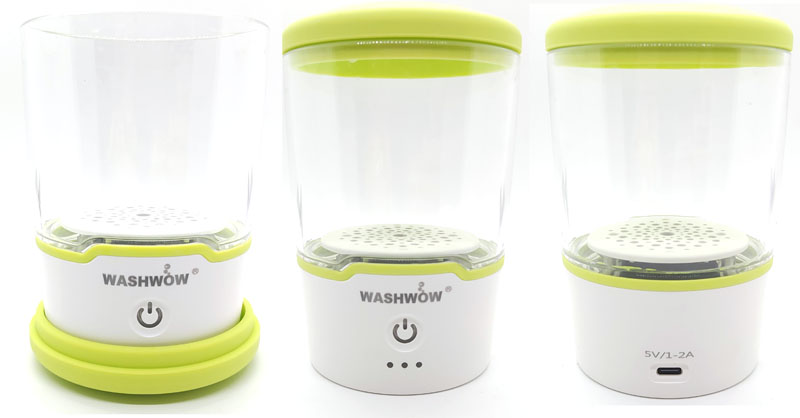
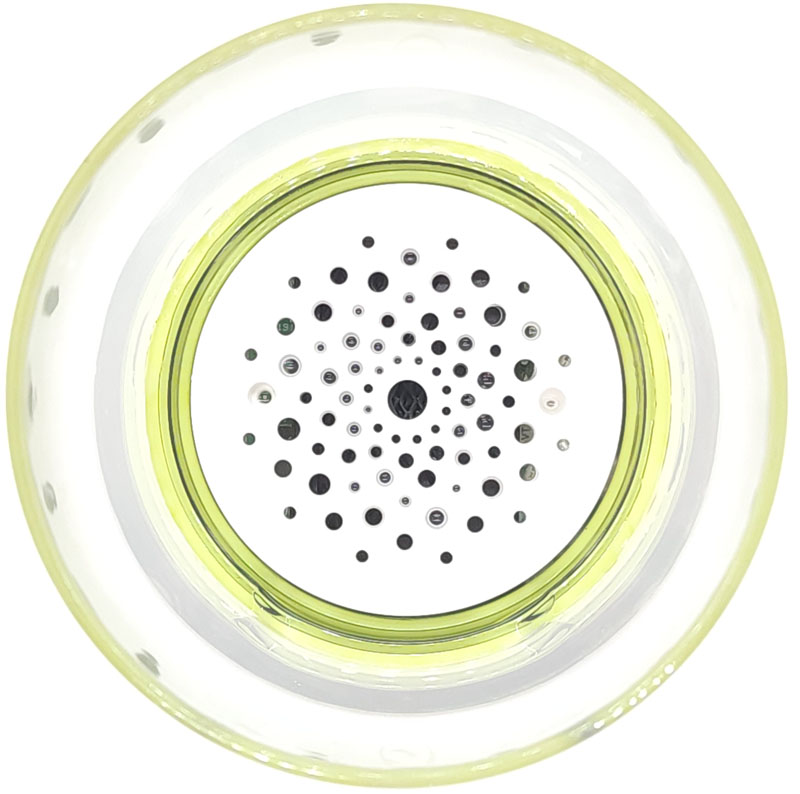
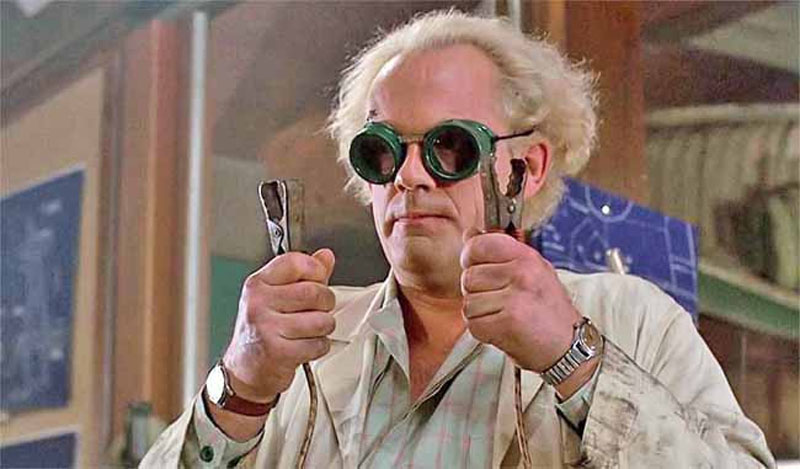
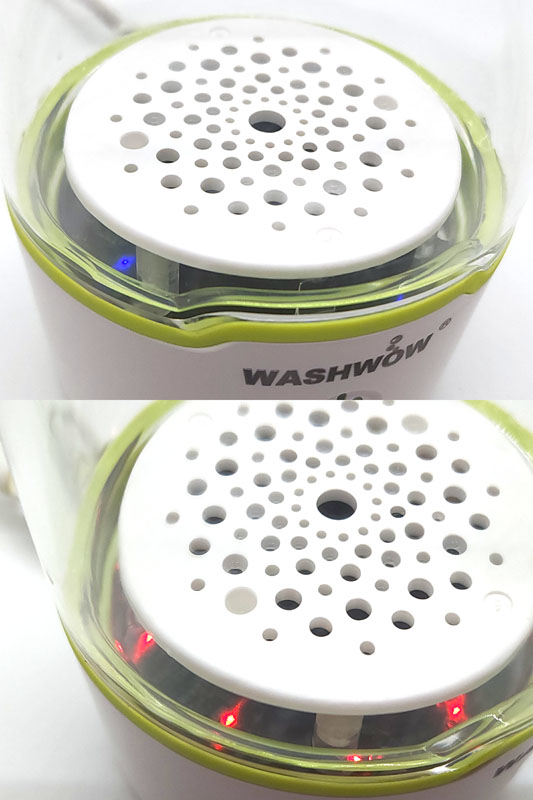
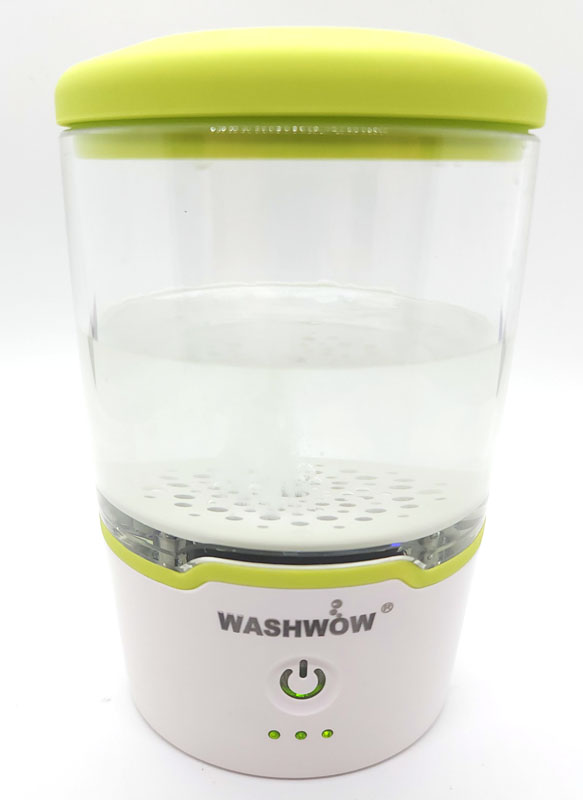
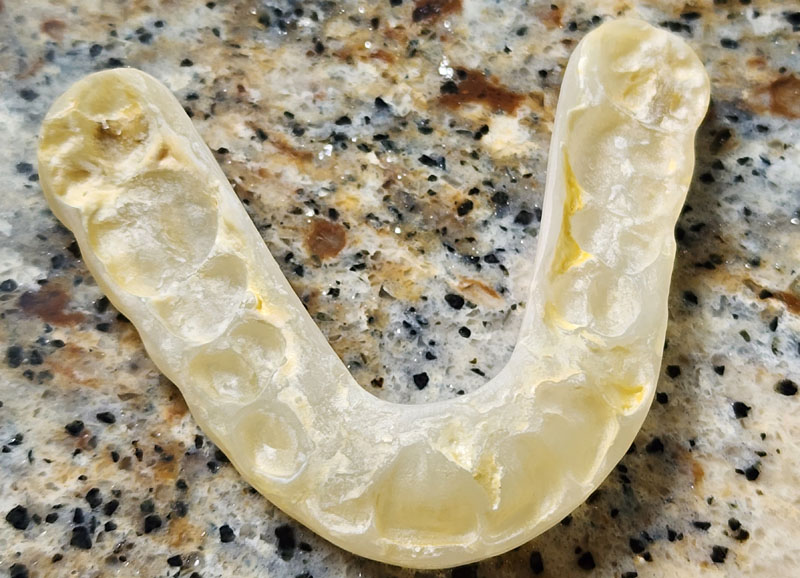
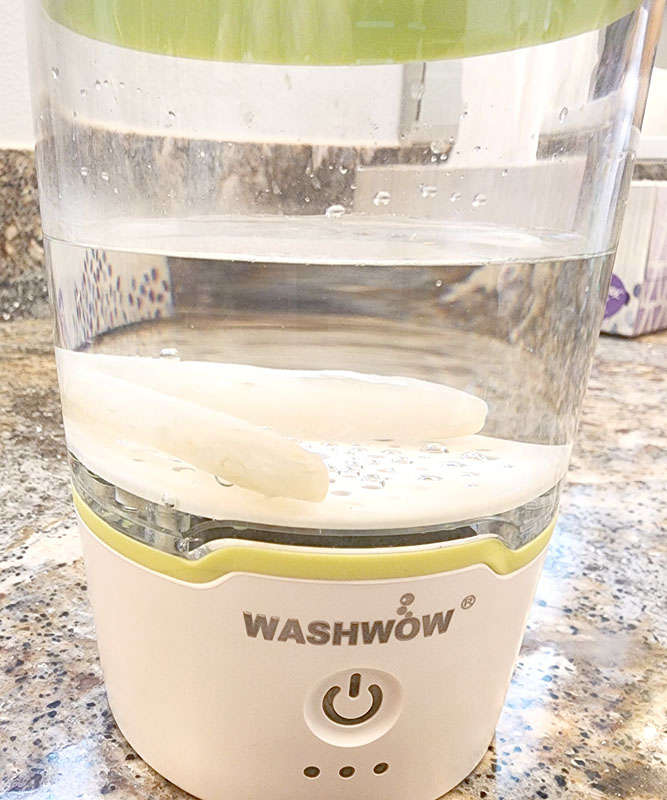
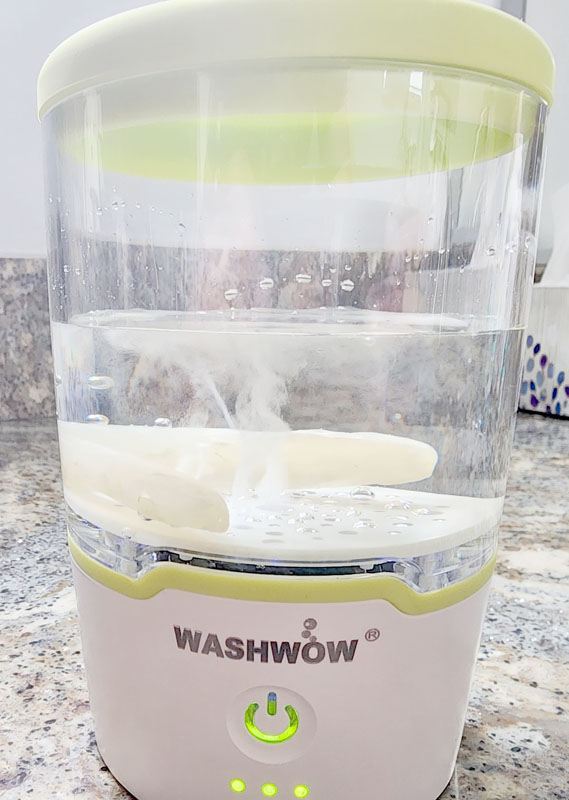
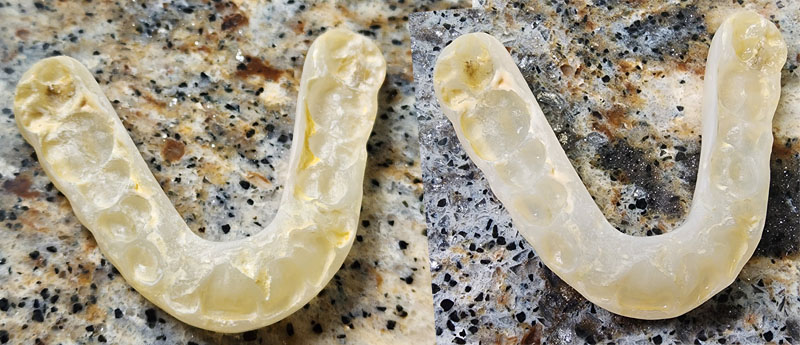
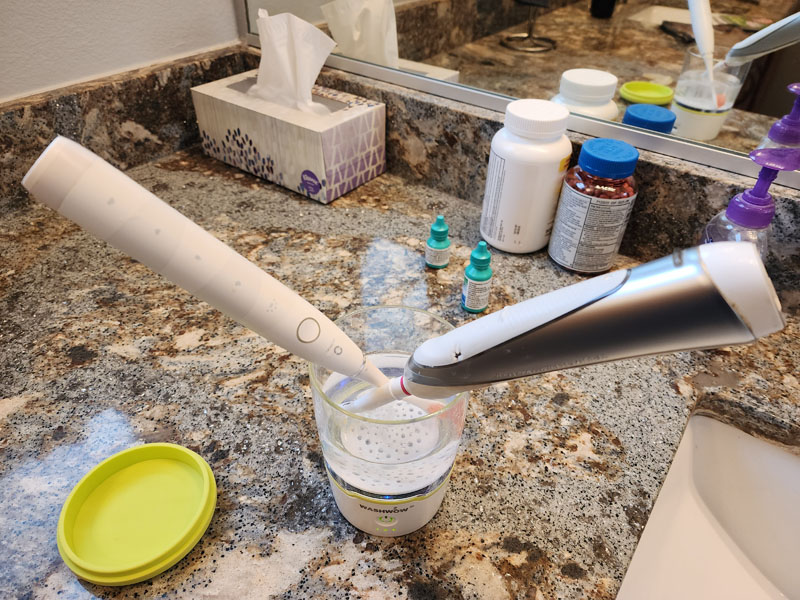
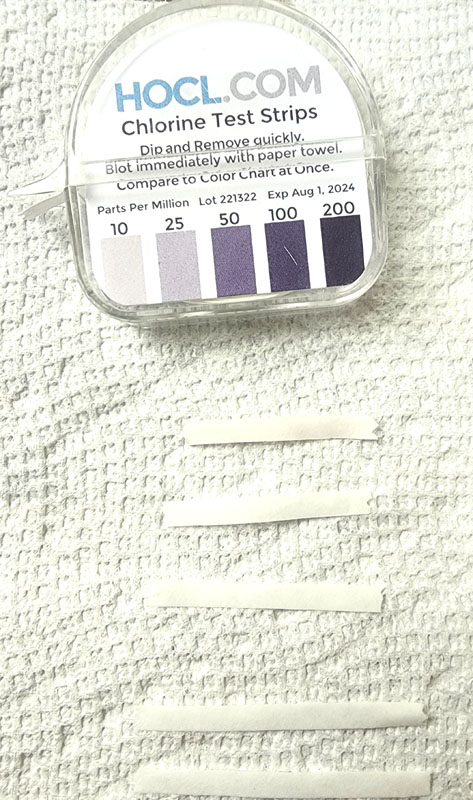
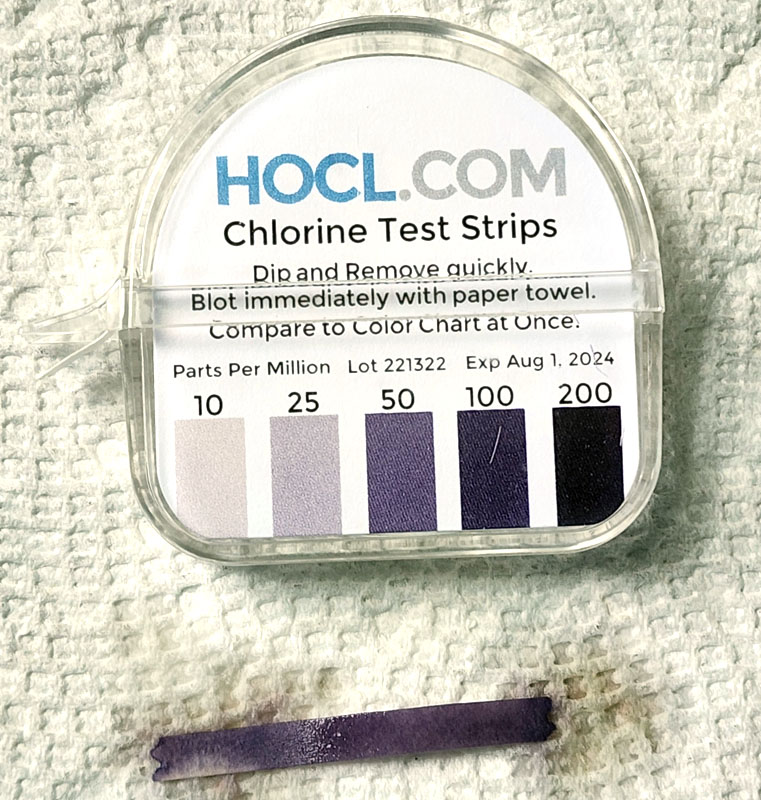

Gadgeteer Comment Policy - Please read before commenting
Great article and thorough review. The device seems cool but there already exists an electrolyzed water producing machine out there called Force of Nature which markets their device for cleaning and disinfecting around your house. The difference is their device uses tap water but also includes little packets of solution which I think is salt water with a little bit of vinegar in it. You fill it with tap water and then add the contents of one packet and bubble magic occurs. The good thing about this is that you are sure of the concentration of hypochlorous acid that you’re producing each time because you use a predetermined amount of water and one magic packet. I’d be curious to see what color the chlorine test strip turns with a Force of Nature produced batch of hypochlorous acid. This Kickstarter cup seems kind of dangerous because as you mentioned you can produce varying strengths of this acid depending on how much salt you do or don’t add to the cup – not a good idea.